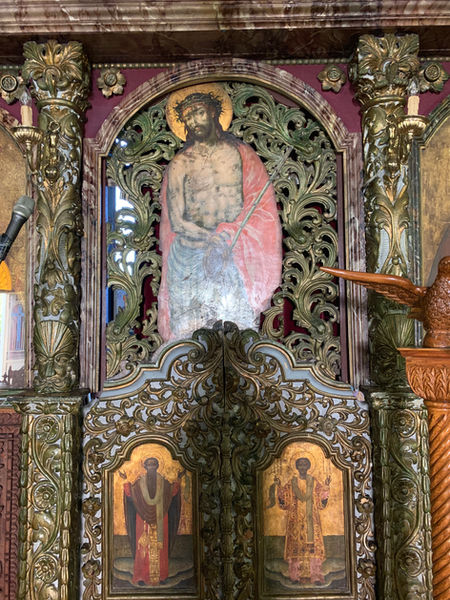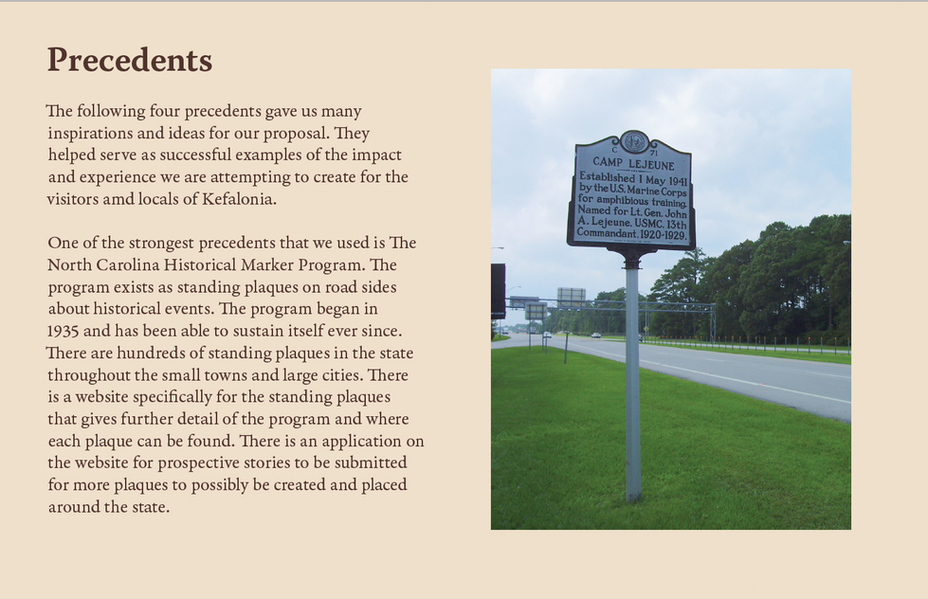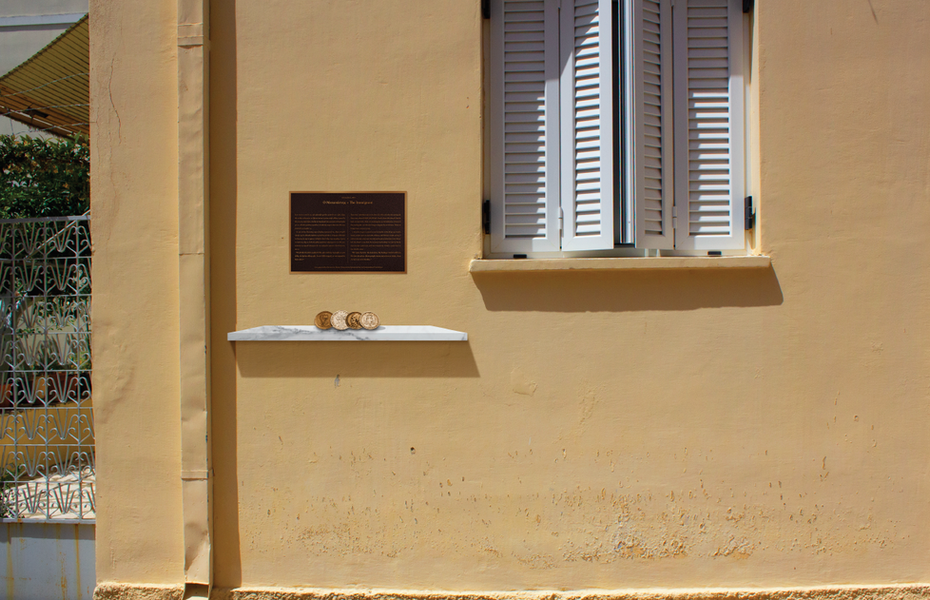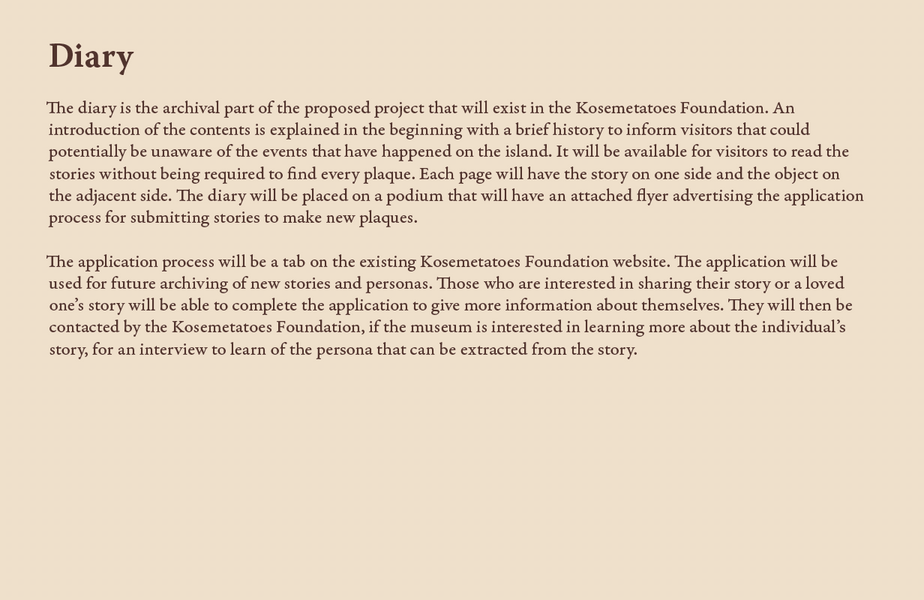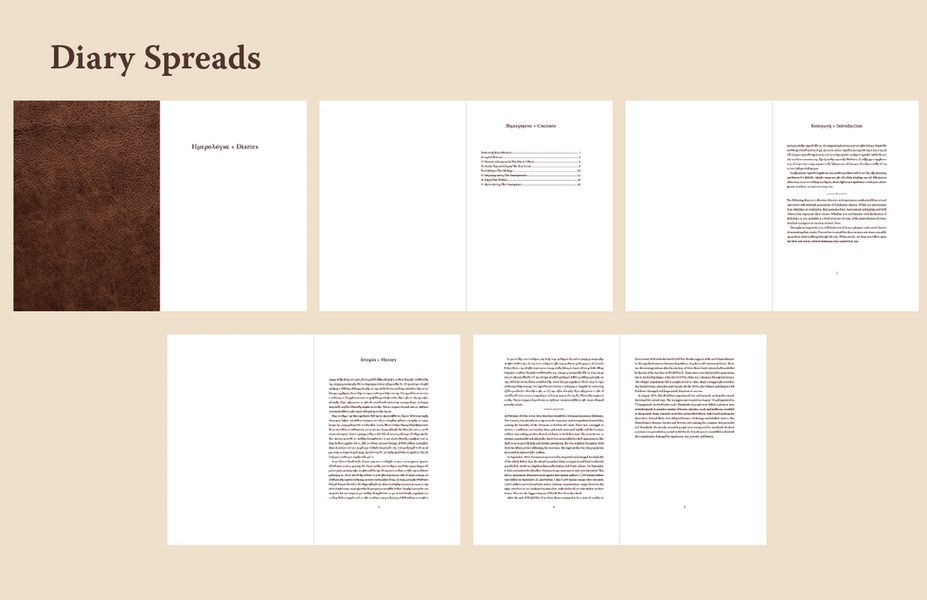SARAH HORN
Graphic Designer | Detail-Driven Creative | Problem Solver
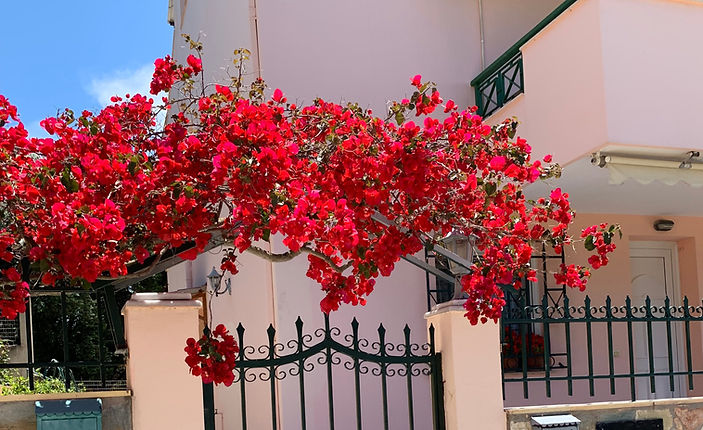
GREECE: SOCIAL INNOVATION AND EXHIBIT DESIGN STUDY ABROAD
The College of Design at NC State requires all majors to study abroad for at least six credits throughout their education in order to graduate. I had decided to wait until the summer after my junior year when I figured I would have more of an appreciation for the cultural experience I was going to undertake and apply it to my final studies during my senior year.
The summer of 2017 was the first time my professor Scott Townsend decided to take a group of NC State students to the island of Kefalonia in Greece, where he had been visiting and working for a few years prior. After hearing about the experiences of this first group of students, I became aware of how different this study abroad experience was compared to others offered by the college and knew it was the trip I wanted to be apart of. I applied the first day I could, got accepted a month or two later, and anxiously awaited May 2019.
I spent a month exploring Kefalonia, specifically our village of Metaxata, mostly on foot since as students we didn't want to (and often couldn't) rent cars. The wifi at our center where we stayed died within our first days there and I was only able to get service at a spot on the hill outside my room. At first, these limitations were frustrating, but as time went on I began to have such an appreciation for life without a phone or a car as I was able to be 100% present at all times and experience the island in a way I never would have.
The first few weeks of our visit were focused around studying the history, culture, and people on the island. I took lead as the head of the research team who worked closely with a local museum, The Kosemetatoes Foundation, to study their archives of books, images, and documents. Immediately, we were made aware of the devastating earthquakes of 1953 that, in just 30 seconds, crumbled Kefalonia to the ground. Kefalonia had barely managed to survive German occupation during WWII, immediately followed by a civil war, that the eathquake was the final blow to an island already at its wits end. Survivors were forced to immigrate and a huge disapora took place. Only recently have people returned to the island, which is now on the rise despite recents events surrounded the Greek economy.
While we were researching, the two other teams were focused on interviewing and documentation. The interview team completed a series of interviews with locals on the island that acted as primary sources to support the research we were conducting. The documentation team was continuing the work done by students in 2017 that included developing site plans and photographing pre- and post-earthquake churches around the island. This work was requested by the local government, the 35th Ephorate.
Our group would travel by bus to these sites and collect the necessary data, while witnessing some of the existing damage from the eathquake we were learning so much about. It wasn't until we visited a few of these sites that I really began to understand how terrifying and decimating this event really was.
After researching and interviewing many people in the community, we were able to develop a statement for the challenge at hand:
Develop a solution that will help educate multiple generations about the culture, social practices, and history that has come before them; try to reestablish traditions that have been lost since 1953.
With my team members Anna Schecterson, Tiffany Keree, and Tracy Sewell, we went through a long, iterative brainstorming process where we combined our experiences, research, and interviews from the first two weeks of the program to develop a solution.
Our final proposal was a scattered exhibit around the capital city of Argostoli that consisted of monuments titled by the different archetypes and stories we developed from direct accounts of Kefalonian citizens in our interviews. We wanted to focus on storytelling as a means of communicating history because of the emotional and lasting impact these stories demand of their readers. We intended on turning the city into an exhibit itself by randomly placing these monuments in the hopes that visitors and locals would stumble upon them, take a moment to interact with it, reflect, and then go about the rest of their day without having to take the time to visit a standing museum.
In the slideshow below, you can read the six different stories and view mockups of what the monuments would look like against actual walls throughout the city of Argostoli.
Below, you will find our final written proposal if you wish to read it in full. A shortened version was presented to Kefalonian stakeholders from the government, education system, and community and the feedback we got from our audience was overwhelmingly positive and appreciative, we were practically moved to tears. The community is actually interested in further implementing our idea and discussions of future collaboration are already in the works.











